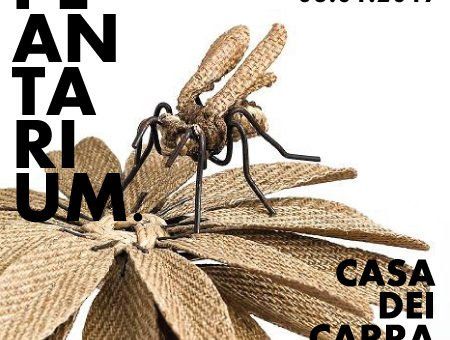
R-EVOLUTION
The Industrial Revolution exploded upon us in the late 18th and early 19th centuries. Yet the 20th and 21st centuries have seen and are still witnessing a new phenomenon…one which I like to call a Technological Revolution. This phenomenon has changed our lives drastically in the space of a few years, and to such an extent that our modern needs and necessities are being fulfilled by an entirely new spectrum of commodities. Through this series of photographs, Norbert Attard and Rebecca Ballestra present their artistic concept by means of a sequence of ‘performances’. The involvement of 100 or more participants aids their creation of a visual record of modern means of communication which have become widely globalised and which are slowly yet surely shaping our culture and society. Television has probably become one of the major sources of communication to be found in the average household. As much as it is a window through which we may be immediately connected to foreign worlds and cultures, there is also the risk that we may be hypnotised by the multi-pixellated screen. Attard and Ballestra offer an interesting view of a number of seated people staring vacantly at a blank screen of a TVset. Are they suggesting that our attention has been captured to such an extent that we have neglected the wider picture – the life around us? The newspaper is a more ‘ancient’ form of communication. This prop is again utilised by the artists as a means of awareness. Many would think that its sole purpose would be to
deliver news of important happenings. Yet we often fail to consider that for the nomad, the tramp or the homeless, a few pages out of a newspaper might help line their cardboard home and act as a means of warmth. Attard and Ballestra propose this double-faceted use of the newspaper contemporarily, within the same line of vision. They place the image of a newspaper-covered hobo on ‘centre-stage’ surrounded by a number of oblivious newspaper-
readers. The effect created is that of the co-habitation of opposing realities. More than television or the newspaper, the means of communication which have flourished and which have penetrated most successfully into our culture in the past years must definitely be the cell-phone and the computer.
No more an army of soldiers marching to the ‘beat of the drum’, we have become dependant on devices and machines. We are the New-age warriors armed with mobile phones, laptops and I denne blackjack regler version fra InterCasino kan du spille 1-5 h?nder i single player spil, og 1 hand i multi player spil. computers instead of guns andswords. These modern armies need not wear uniforms to distinguish themselves between one group and another. These devices are our new status symbols which define who we are and the age we live in. They are the tangibles which constitute the basic unwritten rules serving as underlying norms and codes for behaviour which enable our ‘survival’ in society. It is no longer a question of the survival of the fittest, but the survival of the trendiest! Are we slowly being consumed by consumerism? Has materialism eaten away at our insides? The images representing battle and death strike us forcibly because of their absence of technological and communicative devices. Here we see the interaction of the participants amongst one another, even though they may be apparently inanimate. Yet, after having viewed them in direct connection to communicative means, one cannot help relate the cause of death and battle to the same principle. After the battle has been fought and won, after the bloody deed has been done…where do we stand? These images leave us in a state of contemplation; we cannot help but link them together as though the performances were a kind of comic strip or narrative where the spectator is meant to fill in the blanks and read between the lines. When a movement, action or stance is repeated, it gains a heightened accentuation. Thus, reading a newspaper, or talking on the phone achieves a new perspective as well as a new dimension, under such circumstances. Perhaps this is even more so because such actions are being performed on a ‘stage’, or rather in the ambience of a theatrical space.A Greek Amphitheatre is perhaps the most apt and ideal of settings, linking the Classical Past and Technological Present together. Yet I cannot help but feel the note of irony here: It’s almost as though the amphitheatre is being violated by all this technology whilst simultaneously being honoured by the mass of people indulging in this ‘performance art’. They are giving the space a new dimension to that for which it was perhaps designed and designated. This is not just ‘performance art’ however, it is a collective and mass gathering aimed towards the concretisation of a creative concept.
Repetition of form creates pattern. In fact, the actions being executed take precedence over those executing them. So much so that the identity of the ‘performers’ becomes irrelevant, almost abstract. As though in protest of this notion, the performing participants exhibit their credit and identity cards, whilst at the same time engaging in direct eye-contact with the spectator/audience. Thus their roles change from being the pawns in a game to those of being the ones playing and controlling the game. We can shy away from the advancement in technology, but if truth be told communication has never been easier. Through their series of performances, Attard and Ballestra have presented us with two sides of a coin.
The globalisation of communication devices enables us to be anywhere, anytime. We have power and knowledge at our fingertips, and through this sequence of photographs this is ever more evident and available….
Lisa Gwen Baldacchino













